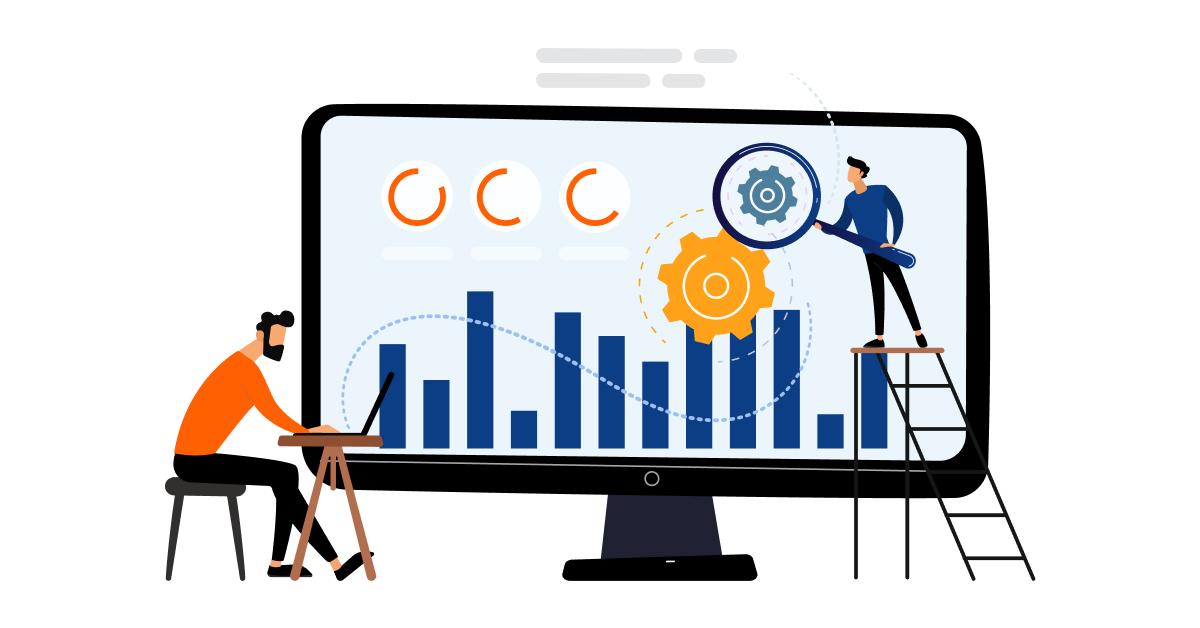Posted on: August 31, 2021
7 Aspects To Consider In Employee Monitoring System For Remote Work
Get started
Rapid technological transformations have given businesses major goals for enhancing their credibility toward customer success. With an efficient tool like an employee monitoring system, today’s leaders can have more features and remote monitoring capabilities at their disposal.
Businesses and tech heads have started relying on productivity analysis and work hours tracking that workforce analytics software provides to help remote workers thrive virtually regardless of variations in geographies and time zones.
Table of contents
What Employee Monitoring System Offers?
BPOs and enterprises worldwide face challenges related to employee productivity tracking and retention. Remote work has enhanced the scope of those challenges more than ever before. In that scenario, to combat those obstacles that remote work projects, the employee monitoring system steps in.
It helps to keep tabs on employee activities that enable supervisors to assess employee performance behaviors. Employee performance behavior can be improvised through constructive and evidence-based feedback managers give.
How to Keep Tabs On Employee Activity Using Remote Employee Monitoring Software?
Selecting an appropriate remote workforce management technology to drive enhanced digital employee experience is the need of the hour. Employee monitoring – the most debatable topic recently became more challenging when the pandemic intensified the obstacles to remote or hybrid work projects. Many business owners understand the potential of employee monitoring software and know they can manage their employees from a distance while not hindering their privacy.
The employee monitoring system can make the work-from-home workforce accountable without sacrificing productivity, morale, or confidence. In fact, AI-oriented features actually serve to boost productivity and mitigate the chances of manual effort and error in data collected.
While monitoring remote employees’ performance, you can understand your remote workforce’s behavioral patterns and work efficiency. When you set timelines for employees to meet their goals, you can analyze this data as an opportunity to evaluate performance and skill set.
So, if you are planning to enable employee monitoring software to tackle your hybrid work challenges or you already have a remote monitoring tool at your disposal, these 7 aspects mentioned below will help you to choose the right and efficient one. Let’s begin!
7 Things to Consider Before You Choose an Employee Monitoring System
Remote monitoring reflects a variety of potential issues. It can be an unfamiliar and daunting concept for some. Where employers see it as productivity analysis software, employees might feel worried if they are not aware of the benefits properly. The employee monitoring system does not limit itself to the concept of mere surveillance or time tracking. There is more to it. Employee activity monitoring tool enables you to highlight strengths and weaknesses within your team while giving you detailed insights on increased productivity and morale among the staff.
Take a look at what you need to check in your employee monitoring system.
1. Consider Usability and Security
When employees have too much of a workload, an employee monitoring system with limited features and capabilities may feel like a burden to employees and supervisors. Thus, using a time-tracking tool that meets your demands and has features with an easy user interface and centralized management is wiser.
The technological advancements in recent times may have provided convenient solutions to all industries, but such convenience could even become a threat to crucial and sensitive data. To avoid and prevent such frequent data breaches during remote work, it is inevitable to use an employee monitoring system that promises data and network security.
2. Seamless and Productive Employee Experience
Managing employee experience virtually is crucial as it directly impacts motivation, productivity, engagement, and retention of employees. Organizations must adopt effective remote team collaboration tools that help boost employee experience.
To improve end-to-end personalized processes and digital interfacing, it will be critical to focus on the diverse composition of employees in the organization. If your remote team monitoring software for remote teams can help you achieve this important aspect, that means your remote workforce planning is appropriate.
3. Identify Problematic Usage
If you have made certain policies for remote work that prohibit social media usage and whitelist certain websites during work hours, employee monitoring software should be able to notify supervisors. Through in-depth analysis of employee work behavior, managers can understand whether their team is violating or adhering to this policy.
Micromanaging is not advisable, but preventing employees from using non-work-related sites is always a good idea. Additionally, certain employees work with sensitive company data so supervisors can identify the loopholes through where violations occurred.
Maximize your remote team performance with Leapmax
Know more4. Expect Integrations and Customizations
In most cases, businesses already know what they want and for what purpose they would use certain technologies. To avoid conflict and confusion when enabling employee monitoring software, it is important that you set realistic expectations before any problem takes place. An activity tracking tool that can be customized and configured as per your business needs, it becomes easy to maintain and balance things.
Through an inactivity time tracking system, administrators can get automated and proactive alerts provided with detailed documentation whenever company policies are violated.
5. Connected and Engaged Workforce
Ensure remote employees do not see work collaboration and engagement as task overload. Your productivity tracking software should serve as a catalyst for communication and effective collaboration between them. Organizations should rethink the strategies to connect their remote workforce seamlessly while focusing on efficiency and productivity.
There should be an increased relevance of remote collaboration tools and employee engagement platforms in the employee monitoring system to provide improved digital employee experience as organizations embrace hybrid working setups.
6. Agile and Adaptive Virtual Culture
In times like these, where remote work is the king, organizations must focus on implementing technology platforms to support mobility and virtual connectivity. Organizations that focus on engaged workforces can have more productive workforces as compared to employees who feel disconnected from the organization.
Employee monitoring systems with capabilities to foster collaboration can be fruitful to enhance employee experience and build productive workforces.
7. Performance-Based Auditing and Quality Assurance
Activity tracking software can help to track the combination of knowledge, work behavior, and interests of each employee over time and map them to evolving business requirements. This vital aspect has pushed organizations to leverage AI-backed tools for data analytics and employee behavior analysis.
Measuring employee productivity and performance in the current hybrid working scenario must be re-engineered to be more agile, collaborative, and frequent. Thus, technological platforms like employee monitoring systems can be used to manage agility in remote settings, effectively time-tracking ongoing performance conversations and incorporating transparency.
Summing Up
It has become more important than ever for organizations to be agile and adapt quickly. Managing a remote workforce with an increased focus that is empathetic and human-centric is essential. However, we cannot overlook today’s technology’s pros, like the employee monitoring system.
In other words, there is a need for remote employee computer monitoring software that benefits both employers and employees. If your business wants to avoid crowds by not involving conventional and illegal micromanaging practices, consider the above factors before enabling an employee monitoring system.







